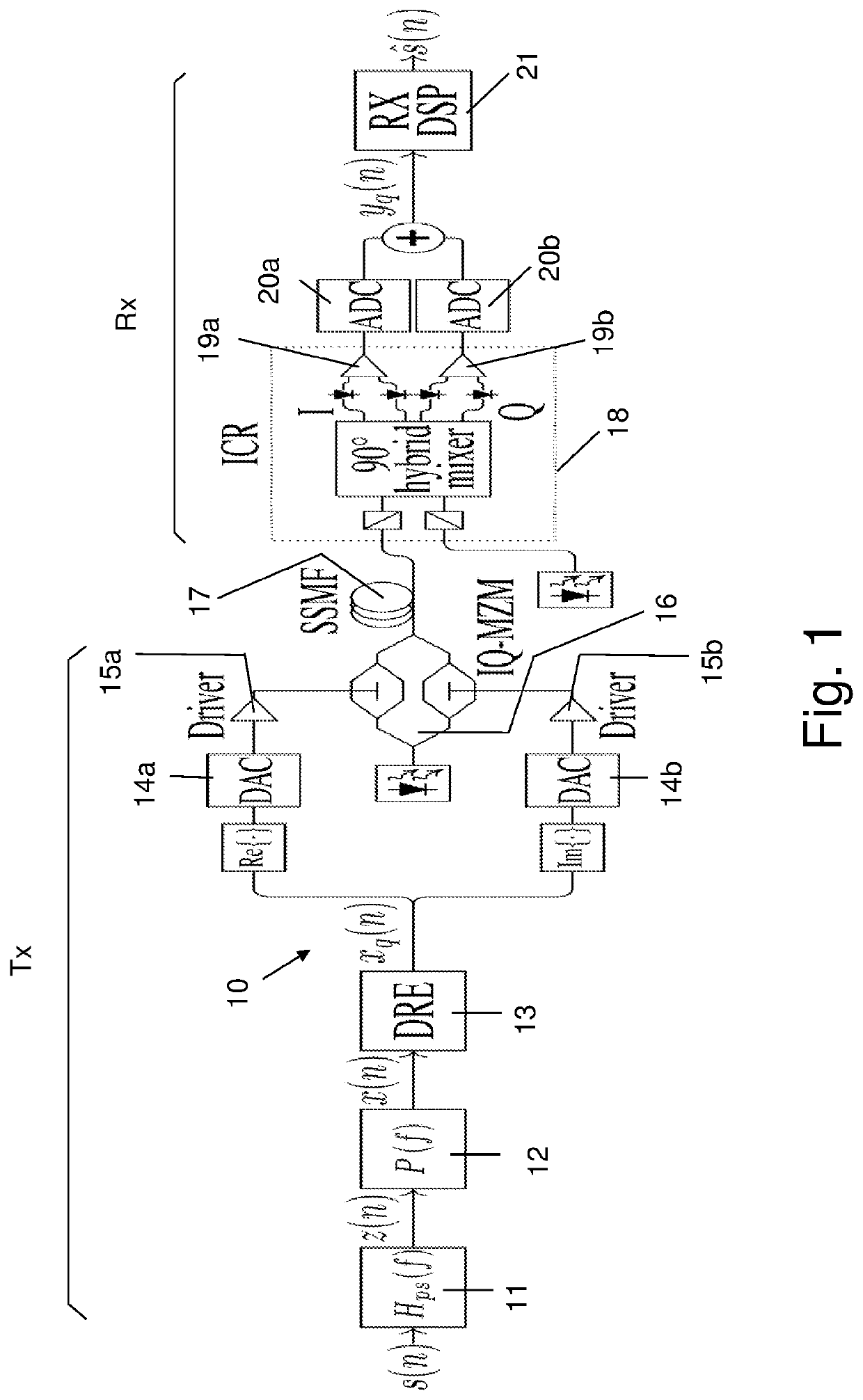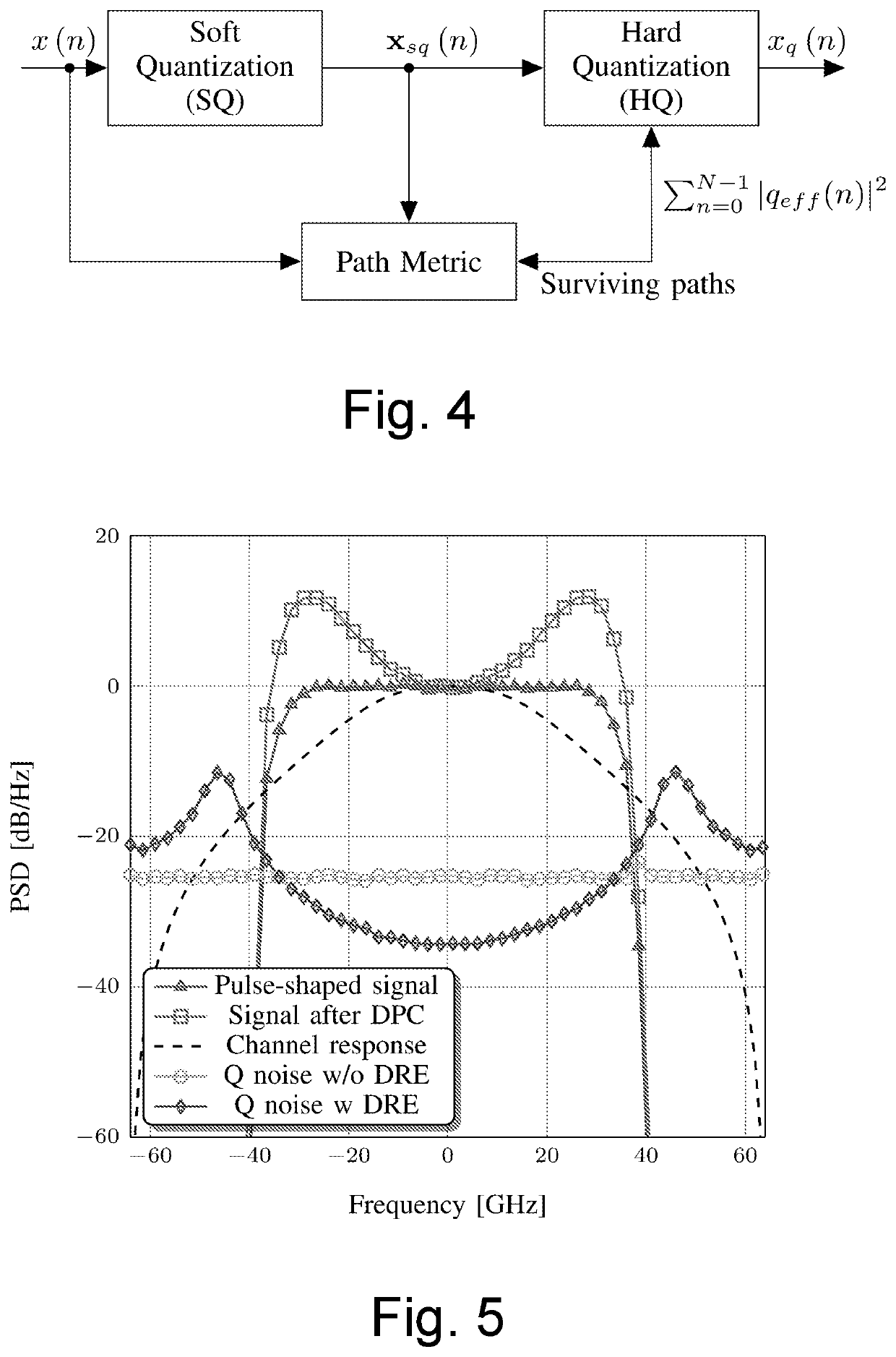Digital resolution enhancement for high speed digital-to-analog converters
a digital-to-analog converter and high-speed technology, applied in the field of high-speed communication systems, can solve the problems of limited resolution, dominant quantization distortion, and especially severe problems, and achieve the effects of increasing the communication channel capacity, increasing the order of modulation formats and spectral efficiency
- Summary
- Abstract
- Description
- Claims
- Application Information
AI Technical Summary
Benefits of technology
Problems solved by technology
Method used
Image
Examples
Embodiment Construction
[0031]The present invention proposes a Dynamic Quantization (DQ) method using a Digital-Resolution-Enhancer (DRE), which mitigates the quantization distortion effects of prior art methods. This method is mostly directed to digital pre-compensation, and is based on the assumption that quantization is a non-linear deterministic operation (rather than the conventionally assumed white noise), implying that its impact on transmission can be anticipated and minimized. The proposed DRE improves the signal-to-quantization-noise-ratio (SQNR) by up to 8 dB. Thus, the DPC can be applied with reduced number of DAC's bits. Conversely, the DRE can enable the use of more complex DPC and more complex transmission (with higher QAM orders) schemes using the same DACs hardware, and consequently achieve extended reaches and higher transmission rates.
[0032]FIG. 1 is a block diagram of a system 10 for performing digital low-resolution pre-compensation of quantization distortions of an optical communicati...
PUM
 Login to View More
Login to View More Abstract
Description
Claims
Application Information
 Login to View More
Login to View More - R&D
- Intellectual Property
- Life Sciences
- Materials
- Tech Scout
- Unparalleled Data Quality
- Higher Quality Content
- 60% Fewer Hallucinations
Browse by: Latest US Patents, China's latest patents, Technical Efficacy Thesaurus, Application Domain, Technology Topic, Popular Technical Reports.
© 2025 PatSnap. All rights reserved.Legal|Privacy policy|Modern Slavery Act Transparency Statement|Sitemap|About US| Contact US: help@patsnap.com



